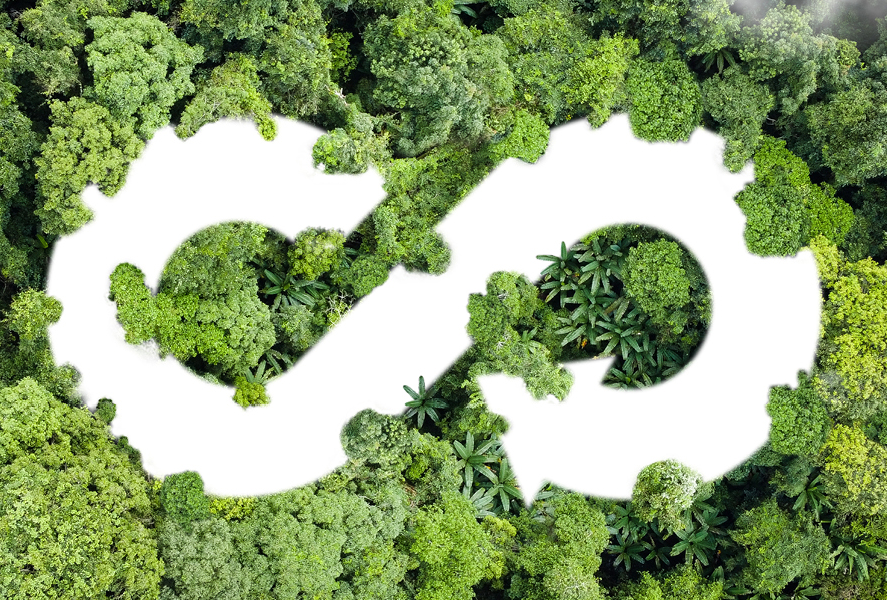The Circular Economy: A Sustainable Alternative to Linear Consumption
In recent years, the term "circular economy" has become a buzzword among environmentally conscious businesses, policymakers, and activists. But what exactly is a circular economy, and why is it gaining so much traction? In this blog post, we will explore the principles of the circular economy, its benefits, challenges, and some real-world examples of how it is being implemented.
What is a Circular Economy?
The circular economy is a systemic approach to economic development designed to benefit businesses, society, and the environment. Unlike the traditional linear economy, which follows a 'take-make-dispose' pattern, the circular economy emphasizes reusing, sharing, repairing, refurbishing, remanufacturing, and recycling existing materials and products as long as possible. The idea is to create a closed-loop system that minimizes waste, reduces the consumption of finite resources, and lessens environmental impacts.
Key Principles of the Circular Economy
The circular economy is founded on three main principles:
1. Design out waste and pollution: By rethinking how resources are managed, the goal is to design products and processes that minimize waste and pollution from the outset.
2. Keep products and materials in use: This principle focuses on finding ways to extend the life of products through maintenance, repair, and remanufacturing. Products are designed for durability, reuse, and recyclability.
3. Regenerate natural systems: Instead of merely minimising harm to the environment, the circular economy aims to improve and regenerate natural systems. This includes practices like returning valuable nutrients to the soil and using renewable energy sources.
Benefits of a Circular Economy
The circular economy offers numerous benefits:
1. Environmental Impact: Reducing reliance on finite resources and minimising waste helps preserve natural habitats, reduce carbon emissions, and manage finite resources more sustainably.
2. Economic Benefits: Circular practices can lead to significant cost savings for businesses by reducing resource expenses and waste disposal costs. It also opens up new business opportunities and markets centered around recycled materials, innovative product lifecycles, and new ways of delivering services.
3. Social Benefits: By fostering an inclusive economy that prioritises local job creation in the refurbishing, recycling, and maintenance sectors, the circular economy can contribute to more equitable economic growth.
Challenges to Implementing a Circular Economy
While the benefits are compelling, there are several challenges to implementing a circular economy:
1. Technological and Financial Barriers: Developing the necessary technology for efficient recycling and remanufacturing can be costly and complex. Additionally, transitioning to a circular economy requires significant upfront investment.
2. Cultural Shifts: Consumers and businesses alike are accustomed to the linear model of consumption. Shifting behavior towards more sustainable practices involves changing deeply ingrained habits and preferences.
3. Regulatory and Policy Challenges: For a circular economy to thrive, supportive regulatory frameworks are essential. Policies must incentivize circular practices and discourage wasteful ones.
Moving Forward
As we face increasing environmental challenges and resource scarcity, the circular economy offers a promising path forward. It requires a concerted effort from governments, businesses, and individuals to rethink how resources are used and valued. While challenges remain, the potential benefits—sustainable growth, reduced environmental impact, and new economic opportunities—are driving innovation and slowly transforming our economic landscape.
Transitioning to a circular economy isn't just about adjustments in manufacturing or recycling; it's about reimagining and redesigning our entire approach to consuming and producing. By fostering a more sustainable, resilient, and equitable world, the circular economy is not just a necessity but an inevitable shift in our global economic practices. As more stakeholders come on board and technology continues to advance, the vision of a circular economy seems increasingly achievable. It’s a journey of transformation that promises a cleaner, greener, and more prosperous future for all.






